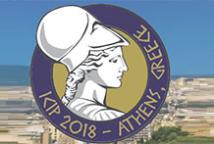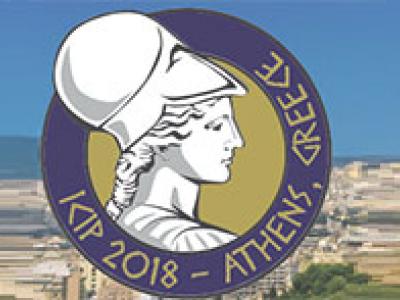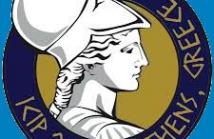
The International Conference on Image Processing (ICIP), sponsored by the IEEE Signal Processing Society, is the premier forum for the presentation of technological advances and research results in the fields of theoretical, experimental, and applied image and video processing. ICIP has been held annually since 1994, brings together leading engineers and scientists in image and video processing from around the world. Visit website.

This paper presents an empirical Bayesian method to estimate regularisation parameters in imaging inverse problems. The method calibrates regularisation parameters directly from the observed data by maximum marginal likelihood estimation, and is useful for inverse problems that are convex. A main novelty is that maximum likelihood estimation is performed efficiently by using a stochastic proximal gradient algorithm that is driven by two proximal Markov chain Monte Carlo samplers, intimately combining modern optimisation and sampling techniques.
- Categories:
 23 Views
23 Views
- Categories:
 15 Views
15 Views
- Read more about BAYESIAN APPROACH FOR AUTOMATIC JOINT PARAMETER ESTIMATION IN 3D IMAGE RECONSTRUCTION FROM MULTI-FOCUS MICROSCOPE
- Log in to post comments
- Categories:
 1 Views
1 Views
- Read more about AESTHETICS ASSESSMENT OF IMAGES CONTAINING FACES
- Log in to post comments
poster.pdf
- Categories:
 6 Views
6 Views
- Read more about Adaptive local image enhancement based on logarithmic mappings
- Log in to post comments
A new local image enhancement technique is proposed.
It is based on a logarithmic mapping function
that is adapted to the luminance
characteristics of the neighborhood of each pixel.
The method permits to simultaneously increase the luminance in dark regions
and decrease it in bright regions. The result is an image with an overall improved
contrast.
- Categories:
 54 Views
54 Views- Read more about DA-VLAD: DISCRIMINATIVE ACTION VECTOR OF LOCALLY AGGREGATED DESCRIPTORS FOR ACTION RECOGNITION
- Log in to post comments
In this paper, we propose a novel encoding method for the representation of human action videos, that we call Discriminative Action Vector of Locally Aggregated Descriptors (DA-VLAD). DA-VLAD is motivated by the fact that there are many unnecessary and overlapping frames that cause non-discriminative codewords during the training process. DA-VLAD deals with this issue by extracting class-specific clusters and learning the discriminative power of these codewords in the form of informative weights.
- Categories:
 68 Views
68 Views
- Read more about PAC-Net: Pairwise Aesthetic Comparison Network For Image Aesthetic Assessment
- Log in to post comments
Image aesthetic assessment is important for finding well taken and appealing photographs but is challenging due to the ambiguity and subjectivity of aesthetic criteria. We develop the pairwise aesthetic comparison network (PAC-Net), which consists of two parts: aesthetic feature extraction and pairwise feature comparison. To alleviate the ambiguity and subjectivity, we train PAC-Net to learn the relative aesthetic ranks of two images by employing a novel loss function, called aesthetic-adaptive cross entropy loss.
- Categories:
 148 Views
148 Views
- Read more about ICIP18001
- Log in to post comments
Traditional methods for multiple object tracking usually consider features at image level and reason about simple space and time constraints. However, in this paper we propose a multiple object tracker based on LSTM network to learn temporally correlated features. Our tracker learns features on velocity, position and appearance aspects of the objects to improve tracking accuracy. In order to deal with occlusion problems, velocity model is also used to predict the lost detections for the occluded identities.
- Categories:
 4 Views
4 Views
- Read more about MULTI-THRESHOLD LIP CONTOUR DETECTION
- Log in to post comments
In this work, we propose a novel, multi-threshold method for lip contour extraction from high-resolution static lip images acquired in an uncontrolled environment and emphasizing on the contour details.
The introduced method is a “Divide and conquer” approach. We broke the problem of lip contour extraction into two base sub-problems of locating the upper and lower lip contours using a novel threshold selection algorithm and combining them into the solution for the original lip contour.
- Categories:
 16 Views
16 Views
- Read more about GRANULOMETRY-BASED DESCRIPTOR FOR PATHOLOGICAL TISSUE DISCRIMINATION IN HISTOPATHOLOGICAL IMAGES
- Log in to post comments
Prostate cancer is one of the types of cancer with the highest incidence in humans. In particular, prostate cancer is the main cause of death from cancer in men over 70 years of age. The automatic analysis of histological images is nowadays a key factor for helping doctors in the diagnosis task. In this paper, we present granulometries as a novel image descriptor to identify abnormal patterns in the prostatic tissue. The morphological alteration suffered by the main structures of pathological glands are registered by the proposed descriptor and achieved in a feature vector.
- Categories:
 12 Views
12 Views